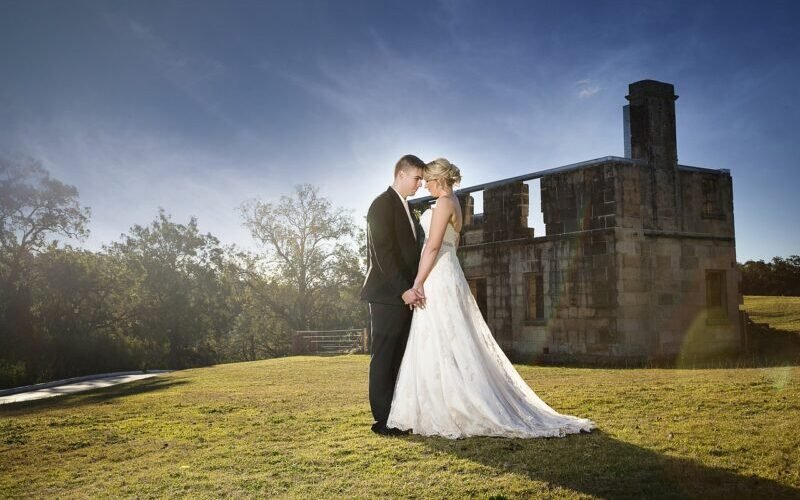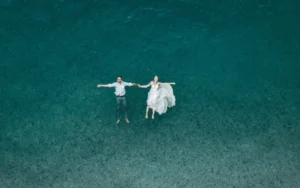Introduction
Planning a wedding involves a myriad of decisions, and one of the pivotal considerations is the amount of coverage required on the big day. Coverage, in this context, pertains to the hours allocated to capture the event through photography and videography. Determining the right number of hours is crucial, as it significantly influences the way memories will be preserved for years to come. A thoughtful approach to coverage can yield a visual narrative that reflects the emotions, details, and cherished moments shared among family and friends.
When couples embark on the journey of wedding planning, they often overlook the potential impact of inadequate coverage. Insufficient hours may result in missed opportunities to document important rituals, candid moments, and the overall ambiance of the celebration. Conversely, excessive coverage can lead to unnecessary expenses and logistics that could be streamlined. Therefore, striking a balance is essential to ensure that the key events are captured without overwhelming the couple with an extended shooting schedule.
Several factors can influence the decision regarding coverage hours. These include the timeline of the event, the number of locations involved, the size of the guest list, and specific moments that couples wish to document, such as pre-ceremony preparations, the ceremony itself, and the reception. Each of these elements plays a vital role in shaping how many hours of coverage may be necessary. Moreover, it is advisable for couples to communicate openly with their chosen photographers and videographers, as professionals can offer insights and recommendations based on their experience.
Ultimately, investing time in understanding the importance of coverage will result in thoughtful decisions that align with the couple’s vision and budget. This ensures that not only are the essential moments captured but that the spirit of the day is authentically represented through lasting imagery.
Understanding Wedding Coverage: What Does It Entail?
When planning a wedding, one crucial aspect to consider is wedding coverage, which refers to the documentation of your special day through photography and videography. This coverage is more than just capturing images and videos; it encompasses an array of moments that narrate the story of your wedding day. Couples often find it beneficial to have a clear understanding of what this coverage entails to ensure they meet their expectations.
Photography plays a significant role in wedding coverage. Professional photographers typically provide a range of services, including pre-wedding shoots, candid shots during the ceremony, and posed family portraits. Each segment holds particular importance. For example, the getting-ready phase, where the bride and groom prepare separately, provides intimate moments that many couples cherish capturing. Similarly, documentation of the vows and the first kiss marks the culmination of the couple’s commitment, making it vital to include these moments in the coverage.
Videography complements photography by capturing the motion and sound of the day, providing a more dynamic memory for the couple. Professional videographers often create highlight reels and longer features that encompass key moments such as speeches, toasts, and the first dance. These elements are essential as they encapsulate the emotions and atmosphere of the event, allowing couples to relive the experience long after it concludes.
In addition to traditional photography and videography, modern coverage might also include drone footage and same-day edits, further enhancing the documentation process. Understanding these components helps couples determine their coverage needs—a crucial step in ensuring their wedding memories are beautifully preserved for years to come.
Factors to Consider When Deciding Coverage Hours
When planning a wedding, one of the critical decisions to make is the number of hours of coverage required from your photography and videography team. Several factors should guide this decision, ultimately ensuring that every essential moment is documented.
The wedding timeline is paramount in determining the coverage hours. A well-structured timeline helps couples visualize how the day will unfold, allowing for better planning. Considerations include the start time for the ceremony, pre-ceremony events like getting ready, and any post-reception activities. Longer timelines will naturally necessitate more coverage hours to capture all the moments that matter.
The length of the ceremony is another vital element. A shorter ceremony may require less coverage than an elaborate event with multiple parts. When evaluating the ceremony, think about unique elements such as vows, readings, or cultural rituals that may extend the duration. This can significantly influence the amount of photography coverage needed to ensure these precious moments are immortalized.
The number of locations also impacts coverage needs. If the couple plans to have the ceremony, reception, and additional events at different venues, this will require ample travel time for the photographers or videographers. Each transition between locations adds time, and additional coverage may be necessary to ensure that all important details are captured across different settings.
Guest interactions and special events such as toasts and dances play a crucial role in coverage decisions as well. Couples often desire candid moments shared with loved ones, which can consume considerable time during the reception. To fully document these interactions and ensure nothing is overlooked, extra hours of coverage may be warranted.
By taking into account these factors, couples can make more informed decisions regarding the number of coverage hours they require for their wedding day, ensuring they capture every moment that holds significance to them.
Typical Wedding Timelines and Coverage Recommendations
When planning a wedding, determining the appropriate hours of coverage for photography and videography can be challenging. Couples must consider the type of ceremony they will have, as different wedding structures require varying amounts of time for capturing precious moments. Understanding the common timelines will help guide couples in deciding on the necessary coverage for their big day.
For elopements, which are typically intimate gatherings with just a few witnesses, a coverage of 2 to 4 hours is often adequate. This allows the photographer or videographer to capture essential elements, including getting ready moments, the ceremony itself, and some creative portraits of the couple. Elopements tend to emphasize the couple’s experience over extensive guest interactions, hence the shorter timeframe.
Small weddings, generally consisting of fewer than 50 guests, usually warrant around 4 to 6 hours of coverage. This timeframe is ideal for documenting pre-ceremony preparations, the ceremony, and some post-ceremony festivities, such as family portraits and candid shots during the reception. Couples should discuss their specific needs with their photographers to ensure they capture all significant moments without feeling rushed.
In contrast, large weddings with more than 100 attendees often need 8 to 12 hours of coverage. This extended timeframe ensures that every significant aspect of the day, from pre-ceremony activities to late-night celebrations, is documented. It allows for comprehensive capturing of key moments, including the ceremony, speeches, first dances, and other traditions that tend to accompany larger celebrations.
As couples contemplate their wedding coverage, it is vital to consider their unique schedule and preferences. By understanding typical wedding timelines and the recommended coverage for different types of ceremonies, couples can make informed decisions that align with their vision and desired documentation for their special day.
Before the Ceremony: Preparations and First Look
The moments leading up to a wedding ceremony often hold significant emotional weight and contribute to the overall narrative of the day. Capturing these early moments, particularly getting ready shots and the first look, requires thoughtful planning and adequate coverage time. Typically, couples should consider allocating between three to four hours for these preparations, as this allows for a relaxed and enjoyable atmosphere while ensuring all pivotal moments are documented.
Getting ready shots include the bride and groom’s preparations, which may involve hair and makeup for the bride, attire adjustments, and, in some cases, moments shared with close family or friends. These intimate snapshots capture the anticipation and excitement while reflecting the personalities of the couple. Furthermore, photographers often focus on the details, such as the wedding dress, accessories, and floral arrangements, which helps to create a well-rounded visual story. Allocating sufficient time for these preparations can alleviate stress, allowing couples to savor the anticipation without feeling rushed.
The first look is another integral moment that deserves careful consideration. This private encounter, where the couple sees each other for the first time before walking down the aisle, creates a unique opportunity for candid emotions to unfold. Capturing this moment not only enhances the emotional depth of wedding photography but also sets the tone for the ceremony. Dedicating at least thirty minutes for this interaction provides the photographer with ample time to capture various angles and reactions, leading to more intimate and heartfelt images.
Finally, by ensuring an optimal timeframe for preparations and the first look, couples can engage fully in these meaningful moments without the pressure of a tight schedule. This thoughtful approach results in a well-documented wedding story that reflects their journey beautifully.
During the Ceremony: Key Moments to Capture
Weddings are characterized by a series of poignant and memorable moments, particularly during the ceremony itself. To ensure a comprehensive capture of these moments, it is essential to allocate sufficient coverage time. Critical elements that should be documented include the processional, the exchange of vows, and the ring exchange, all of which are significant highlights of the event.
The processional marks the beginning of the ceremony and typically starts with the entrance of the wedding party, culminating in the arrival of the bride. This portion of the event is rich with emotional undertones and anticipation; thus, having ample time to capture this moment is vital. It is recommended that photographers arrive at least 30 minutes prior to the ceremony. This allows them to set up and be prepared to document not only the procession but also candid interactions among guests before the ceremony starts.
Equally essential are the vows, where the couple articulates their promises to each other. This moment is often the emotional apex of the ceremony, highlighting the couple’s commitment. Coverage during this segment should be intimate and unobtrusive, allowing for genuine expressions to be captured. A typical recommendation is to allocate at least 15-20 minutes of coverage during the vows to ensure that different angles and reactions can be documented.
The ring exchange follows, symbolizing unity and love. This significant transition deserves focused coverage, as it marks the formal commitment between partners. Offering at least 10-15 minutes for this segment will ensure that photographs can convey the depth of emotion felt during this moment. By planning for a total of approximately one hour of dedicated coverage during the ceremony, couples can secure a well-rounded collection of their wedding’s key moments, celebrating the essence of their union effectively.
Reception Coverage: Celebrating with Family and Friends
Wedding receptions are often regarded as one of the most anticipated segments of a wedding day, serving as a time for joy, celebration, and camaraderie among family and friends. It is crucial to plan ample coverage for this portion of your event to ensure that every memorable moment is captured without gaps in the documentation of the festivities. Typically, receptions encompass several key events that are meaningful to couples and their guests.
Traditionally, the reception begins with the grand entrance of the newlyweds, setting the celebratory tone for the evening. Following this, the couple often shares their first dance, a quintessential moment steeped in sentimentality. This occasion is not only about the couple’s bond but also offers a visual representation of love that photographers strive to capture beautifully. Additionally, the cake cutting ceremony is another highlight, symbolizing unity and shared life ahead. This moment is often accompanied by cheers and laughter, making it essential to have sufficient coverage to document both the intimate and broader reactions of the attendees.
To enhance the overall wedding experience, speeches delivered by family members and friends play a vital role in the reception. These speeches can range from humorous anecdotes to heartfelt wishes for the couple’s future. Capturing the essence of these speeches through photography and videography is crucial, as they contribute to the emotional narrative of the celebration. Furthermore, including moments of guests interacting, dancing, and celebrating adds depth to the captured events.
Based on the nature and extent of the events during the reception, it is recommended to secure at least four to six hours of coverage. This duration allows for adequate time to document all the pivotal moments, from entrance to the last dance. The goal is to encapsulate the spirit of the celebration, ensuring that the essence and emotions of the evening are preserved for years to come.
Consulting with Your Photographer/Videographer
When planning the coverage for your wedding, effective communication with your photographer and videographer is essential. These professionals play a crucial role in capturing the essence of your special day, and understanding how to discuss your needs with them can help tailor their services to your unique vision. Begin by preparing a detailed timeline of your wedding day, so that both parties understand key moments, such as the ceremony, reception, and any specific events that require special attention.
During your discussions, provide insights into the locations and setting of your event, as this will influence the type of coverage that your photographer and videographer will need to provide. It is also important to communicate any special requests or particular shots you envision. For example, if you have specific family portraits or candid moments that you wish to be captured, make sure to express these desires clearly.
Additionally, inquire about their previous experience with similar weddings. This can not only assure you of their expertise but also spark creative ideas that align with your theme. Discuss the various packages they offer, including the number of hours of coverage, which can vary significantly based on your requirements. Take into consideration whether you desire extensive coverage, encompassing preparations through to the end of the reception, or whether a shorter coverage time meets your expectations.
Lastly, trust your instincts during these discussions. A good photographer and videographer will take the time to listen to your ideas and help customize the coverage based on your preferences. By establishing a collaborative atmosphere, you can ensure that they understand your vision, leading to more meaningful imagery of your wedding day.
Conclusion: Finding the Right Coverage for Your Unique Wedding
Choosing the appropriate amount of coverage for your wedding day is a crucial decision that can significantly influence how your special moments are captured and remembered. Every couple has unique needs, timelines, and wedding styles that should inform their choice of photography and videography coverage. Understanding these nuances is essential to ensure that you adequately capture the essence of your day, from the anticipation of getting ready to the joy of the reception.
When evaluating how many hours of wedding coverage you require, consider the timeline of your event closely. If you have a traditional ceremony followed by a well-organized reception, you might find that a standard package requiring eight to ten hours suffices. However, for more elaborate affairs with multiple locations or extensive events such as pre-wedding rituals, additional hours may be warranted. Each hour of coverage adds to the breadth of your story, allowing for detailed documentation of the day’s proceedings.
Additionally, think about your wedding style and atmosphere. An intimate gathering may need less coverage compared to a grand celebration with multiple activities. Whatever your choice, make sure it aligns not only with your vision but also with your budget, as these factors are interdependent. Ultimately, the goal is to choose coverage that will empower you to relive those beautiful moments for years to come. By taking the time to evaluate your options and make thoughtful decisions, you can ensure that you capture the highlights of your wedding day fully. Trust that your choices will reflect the artistry and emotion of your relationship, preserving your cherished memories forever.







